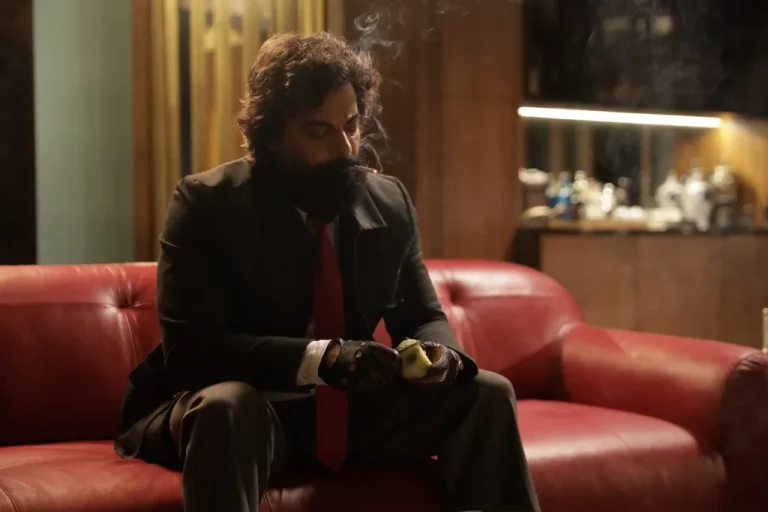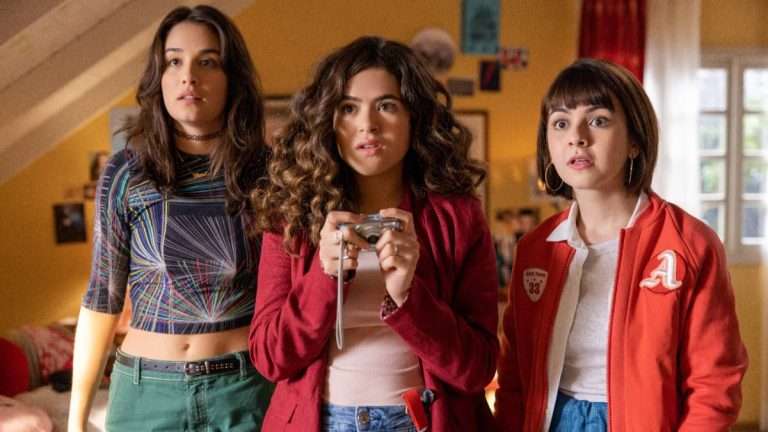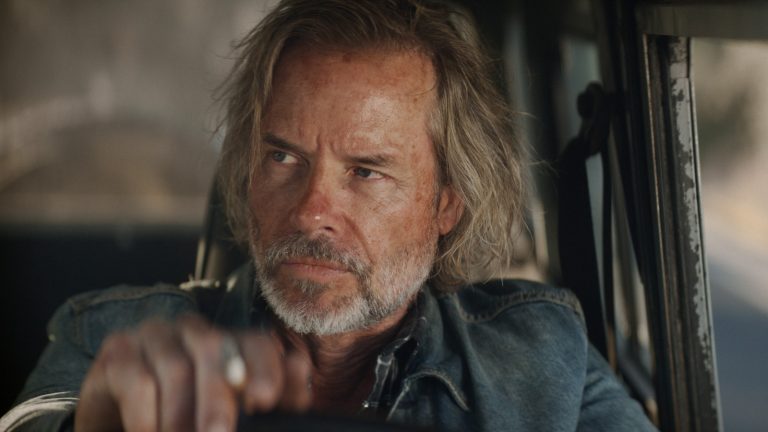The storyline of Francis Ford Coppola’s Godfather trilogy is regarded as a key cultural milestone due to its ability to captivate viewers all over the world with its intriguing story and memorable characters. Michael Corleone is identified as the primary protagonist among the characters, undergoing a significant transformation that effectively strikes an emotional connection with the audience. The narrative centers around the journey undertaken by the protagonist. The primary goal of this article is to conduct a thorough analysis of the character traits exhibited by Michael Corleone. More specifically, to investigate Michael’s development in the context of the historical period in which he lives as well as the influences of his familial and societal milieu. Moreover, the investigation delves into the spiritual and psychological deterioration experienced by the character, pinpointing the occurrences that contributed to shaping his course.
At the same time, as the outcome of this article becomes apparent, it will also become apparent that he is a decent character, despite the widespread belief that the main character is an antagonist/anti-hero and that he truly has a tragic ending because of the unfortunate life experiences that have happened to him in his life. In addition, this analysis investigates the persistent impact that Michael Corleone has had by looking into his influence on later cinema and television productions.
To sum up, it highlights Michael Corleone’s iconic stature among audiences now and in the near future. The methodology employed in this article involved a comprehensive examination of the trilogy, scholarly investigation, and critical analysis in developing a nuanced understanding of Michael Corleone’s persona and his lasting impact.
The events of The Godfather Trilogy are set within an era of American history and culture that spans from the 1940s to the 1970s. The films that together make up “The Godfather Trilogy” all represent significant social and political shifts that took place during this era, which were defined by several significant changes. Several momentous events took place during this period, each significantly impacting American society’s structure and functioning. World War II, the Cold War, the civil rights movement, and the Vietnam War were significant historical events that significantly impacted their respective eras’ social and political landscape.
The portrayal of Italian Americans in various media outlets during this period resulted in the emergence of several prevalent stereotypes and caricatures. These depictions frequently linked Italian Americans with the mafia and other types of organized criminal activity. The representations in question had a hand in sustaining cultural prejudices and strengthening unfavorable preconceptions of Italian Americans as being implicated in illicit conduct.
The impact of the mafia and other organized crime syndicates on the history and culture of the United States cannot be disregarded. Academic discourse has highlighted their significant impact across various domains of American society, encompassing the realms of politics, corporate affairs, and popular culture. A comprehension of the historical and cultural context in which The Godfather trilogy was situated is imperative to gaining a thorough understanding of the characterization of Michael Corleone and the overarching themes that were explored throughout the movies (Giovanni 79-82).
The cinematic productions of this era were influenced by significant political transformations and occurrences that played an essential part in determining the overall storylines and motifs. The post-World War II era witnessed an upsurge in sentiment toward nationalism and a quest for stability, which resulted in the emergence of conservative ideologies and the “Red Scare.” Senator Joseph McCarthy’s anti-communist campaign was at the forefront of this movement. The Godfather trilogy incorporates political themes as the Corleone family endeavors to adapt to a shifting political environment while preserving their illegal dominion (Giovanni 84-86)
Significant social and political movements, including the civil rights movement, anti-war protests against the Vietnam War, and the counterculture movement, marked the 1960s. These movements challenged established power structures and provoked inquiries into the role of authority within society. The socio-political dynamics present in society are reflected in the challenges Michael Corleone encounters as he endeavors to harmonize his aspirations with the evolving ethical and political atmosphere. Thus, the era’s political climate significantly affected the plot and character progression of The Godfather trilogy, introducing complicated dimensions and reflecting the difficulties of the era (Giovanni 86-89).
The Godfather trilogy, which consists of three novels, depicts the complex relationship between Michael Corleone’s mindset and behavior as influenced by his familial ties and environment. At the beginning of the narrative, Michael is depicted as a principled brother who detains from his relatives’ criminal activities. Despite this, Michael endures a significant change as the story progresses. As he becomes more immersed in the illegal domain of organized criminal activity, his perspective changes, culminating in his unsuspected elevation to the position of the unenthusiastic successor to the Corleone dynasty.
Michael struggles to come to terms with the conflicting loyalties within his familial relationships while also facing the pressure of fulfilling social expectations. Michael’s strong sense of duty to safeguard and uphold the family legacy ultimately trumps his ethical concerns, despite his initial desire to pursue an alternative course of action. According to Dwight, the previously mentioned transformation can be interpreted as a manifestation of the high value placed on loyalty and honesty in Italian American households. This value system frequently extends beyond the boundaries of the law. The change can indicate that Italian American households highly value loyalty and integrity (190-195).
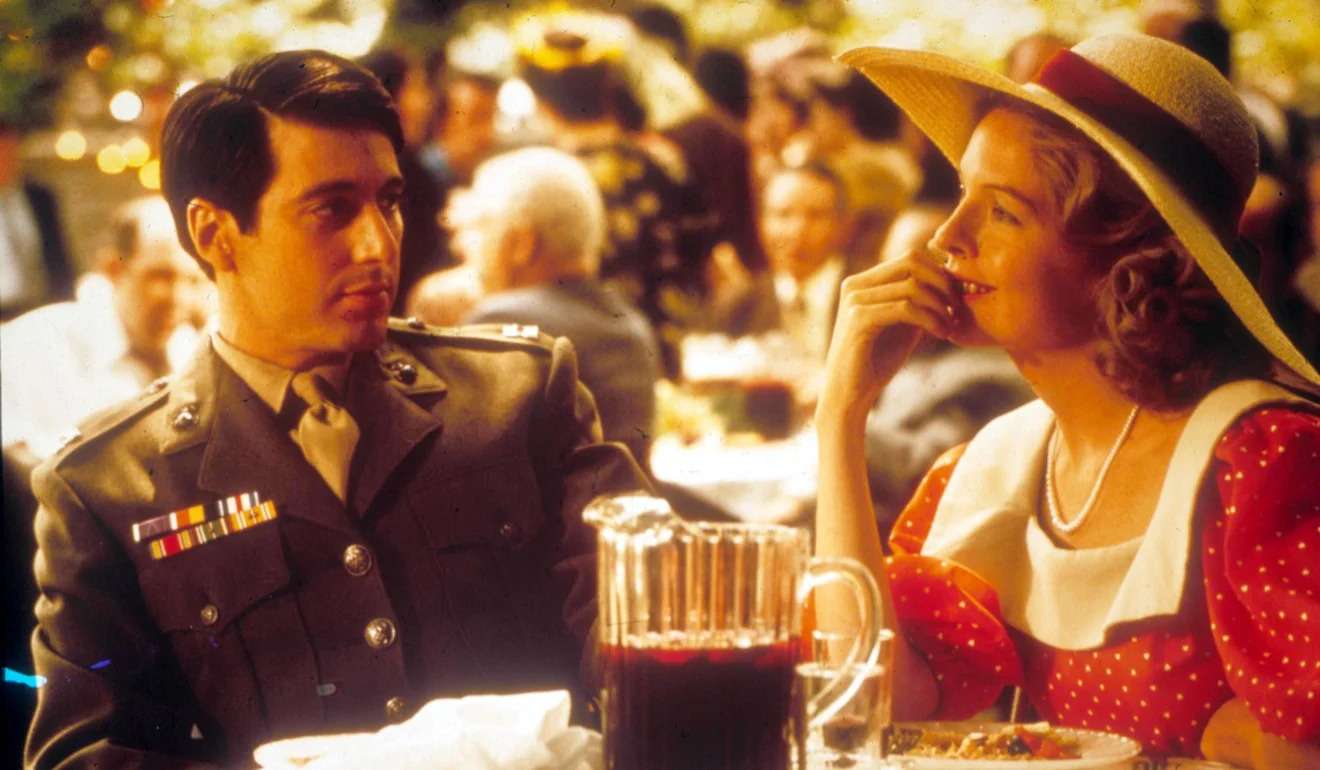
Furthermore, Michael’s behavior and decisions are impacted by the intricate web of power struggles, aggression, and deceit that saturates his surroundings. Due to the ongoing hazards and perils he encounters, he is compelled to adopt a calculated and ruthless approach, leading to a transformation that blurs the line between ethics and unethical behavior. The correlation between Michael’s mindset and conduct towards his family and surroundings is intricately intertwined, exemplifying the intricate dynamics within the Corleone storyline (200–204).
Initially, Michael is depicted as a responsible child who abstains from engaging in his kin’s illicit endeavors. The individual in question exhibits idealistic tendencies and vocalizes a strong inclination to disassociate from the realm of organized crime. The scene in which Michael expresses his desire for an alternative lifestyle emphasizes his initial depiction as a responsible and revolutionary individual who distances himself from his family’s illegal pursuits. A particular scene stands out as significant during a gathering of relatives at the Corleone family wedding. Michael conveys his desire to maintain an honorable and respected way of life when discussing his family’s enterprises. In The Godfather, he tells his girlfriend, “That’s my family, Kay. It is not me (00:57:35).” This sequence demonstrates Michael’s initial reluctance to join organized crime and his dedication to choosing a moral course.
There is also another quotation about the inevitable fate of Michael. Don Corleone said in The Godfather Volume 1 to his son before dying:
I never wanted this for you. I worked my whole life- I don’t apologize – to take care of my family, and I refused to be a fool, dancing on the string held by all those big shots. I won’t apologize – that’s my life – but I thought that when it was your time, you would be the one to hold the string. Senator Corleone; Governor Corleone. Well, it wasn’t enough time, Michael. It wasn’t enough time (01:53:20-01:55:10).
His expression of sorrow and resignation captures the complexity of his persona as well as the responsibility he carries as the patriarch. In this scene, Don Corleone expresses his dissatisfaction over the fact that Michael, his youngest son, has been involved in organized crime despite his earlier intentions to follow a different career path. Don Corleone acknowledges the importance of Michael’s involvement while grieving the loss of innocence and the prospect of a different life, stressing the weight of the Corleone family legacy and his conflicting feelings.
Nevertheless, as the cinematic narrative unfolds, Michael’s allegiance to his kin and his yearning to safeguard them prompt him to assume a more involved position in the enterprise. In one moment, Michael takes a more active role in defending his family after learning that his father’s life is in danger. A crucial sequence that showcases the protagonist’s evolution is the elimination of Sollozzo and McCluskey at the eatery. Michael, who was initially hesitant, ultimately assumes control and shoots both individuals, consolidating his descent into violence and authority to save his father’s life.
After the unsuccessful endeavor to prove his progenitor’s existence, Michael engages in a confrontation with Captain McCluskey and Sollozzo with the aim of bargaining for conditions. Despite the potential hazards, Michael exhibits a courageous demeanor by confronting the two individuals, demonstrating his resolve to exercise authority and safeguard his family at all costs. The sequence showcases Michael’s aptitude for exerting authority and managing stressful circumstances, signifying a further advancement in his progression toward assuming a dominant role in organized crime.
Another example of this progress is that, during the confrontation with Carlo, the abusive partner of his sister, Michael exhibits a heightened level of engagement in the family enterprise. Michael assumes agency and confronts Carlo in an intense altercation after he realizes Carlo’s involvement in the family’s treachery. Within this order, Michael exhibits his dominance and insists upon deference from Carlo, warning him that his behavior will not be ignored. This specific event exemplifies Michael’s growing inclination to establish his dominance and protect the family at any expense.
In “The Godfather” trilogy, Michael Corleone’s character arc is a fascinating study of the slow transformation of a reluctant outsider into a formidable leader inside the world of organized crime. This transformation takes place over the course of all three films. Michael gives the impression of being emotionally distant from the illegal endeavors of his family in the early stages of the story, choosing instead to follow a lawful course of action. On the other hand, as events progress, his devotion to his family and his overarching desire to look out for their best interests force him to take on a more active position within the Corleone empire.
The scene in the restaurant acts as a turning point and demonstrates Michael’s development from a cautious observer into a resolute and merciless character. Michael orchestrates the assassination of Sollozzo and McCluskey in this scene. This development continues throughout the course of the trilogy as Michael’s power and influence increase, leading to deliberate maneuvers, the elimination of rivals through strategic extermination, and his ascension to the role of head of the Corleone family.
However, as his power grows, so does his sense of isolation and paranoia, which in turn causes his relationships to become strained and creates internal tensions. Michael’s efforts to regain his legitimacy and find redemption are ultimately fruitless, and he meets a tragic end as a direct result of his decisions. The nuanced portrayal of Michael Corleone’s character provides an intriguing look at the complexity of power, morality, and the human ability for change within the context of a criminal enterprise (Dudley 38-40).
The subsequent installment delves deeper into Michael’s character progression as he solidifies his authority as the leader of the Corleone clan. The individual in question displays a growing tendency towards ruthlessness, systematically removing any individuals who may potentially jeopardize his dominion. A pivotal moment showcasing his metamorphosis is the Senate hearing, during which he provides testimony about his illicit undertakings. Michael’s perjury demonstrates his readiness to manipulate and mislead to safeguard his interests.
At the juncture of the third cinematic installment, Michael’s personality has evolved into a multifaceted amalgamation of dominance, remorse, and susceptibility. The individual in question pursues redemption and legitimacy yet is plagued by the repercussions of their prior deeds. In a poignant sequence, Michael experiences a collapse while attending his daughter’s opera performance, symbolizing the weight he bears and the consequences of his decisions on his psyche.
In another instance, Michael endeavors to establish a valid business agreement by exhibiting a forceful display of authority during a conference with the Vatican Bank. The individual proclaims his commitment to safeguarding the prospects of his kin and pledges to ensure the endurance of the family’s heritage. This scene aptly demonstrates Michael’s authoritative prowess and adeptness in utilizing his sway, thereby consolidating his dominant status. The instances serve to underscore the progressive evolution of Michael Corleone’s persona across the trilogy, commencing with his initial disinclination to espouse his kin’s illicit undertakings and culminating in his eventual metamorphosis into a formidable and ethically compromised entity (40-42).
It would also be beneficial to discuss the events of Michael Corleone’s prime period following his gradual transformation to determine his character’s tendency toward evil. His order to execute Carlo Rizzi, his brother-in-law, is evidence of Michael Corleone’s transformation into a malevolent person and the consequences of his involvement in illegal activities. The film “The Godfather” reveals that Carlo was involved in the familial betrayal that led to the death of Michael’s first wife, Apollonia.
The untimely death of Apollonia is a turning point for Michael, as it signifies the end of his innocence and the beginning of his descent into the underworld of organized crime. The brutality of her murder, which was intended for him, fills him with overwhelming sorrow and remorse, exacerbating his preexisting psychological turmoil. This traumatic event sows the seeds of vengeance and a desire for power within Michael, compelling him to seek revenge from those responsible for the assault. Michael issues the order for Carlo’s execution detached and emotionlessly. This action demonstrates Michael’s strategic brutality and his willingness to prioritize authority and retribution over interpersonal relationships. These events provide a character analysis of Michael Corleone, revealing his complex and morally questionable nature.
Michael’s orchestration of a series of targeted murders, commonly known as the “Baptism Scene,” which serves to solidify his authority by eliminating his rivals, is another indication of his moral decline. Michael participates in the baptism of his nephew during this crucial sequence, which coincides with the revealing of multiple assassinations. The contrast between the sacred ritual and Michael’s violent actions highlights his complete moral corruption. The depicted scenario illustrates the protagonist’s transformation into a ruthless and strategic character who is willing to commit multiple murders to establish and maintain his dominance over the gang.
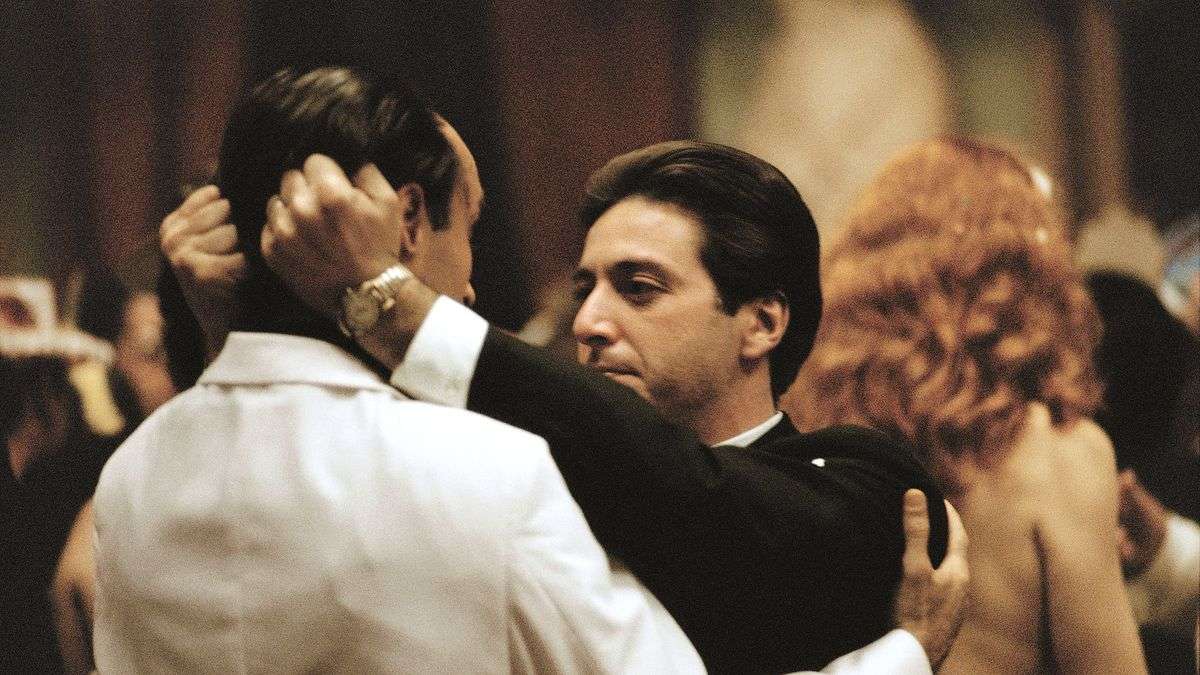
The enduring popularity of Michael Corleone as an iconic figure is due to a combination of factors, including the complexity of his character, his development throughout the trilogy, and the universal themes he embodies. The protagonist’s internal conflict and moral ambiguity personify the character’s complexity, allowing the audience to empathize with him or her. This character is a compelling antihero due to his transformation from a naive interloper to a ruthless gang leader, which subverts traditional heroic conventions. Al Pacino’s portrayal of Michael is multifaceted, dynamic, and emotionally resonant, imbuing the character with vitality and depth that have become the stuff of cinematic legend.
Michael’s character trajectory, in which the audience is forced to experience his descent into insanity, resulting in a sense of shared suffering, contributes to the narrative’s exquisite quality. Moreover, the narrative’s examination of authority, kinship, and selfhood strikes a chord with the audience, provoking thoughts about universal human interactions. Michael Corleone has attained iconic status within the realm of cinema due to his immense popularity, the complexity of his character path, and the timeless themes he represents (40-42).
Michael Corleone’s heartbreaking collapse and solitary death marked the end of a life full of regrets and the tragic consequences of his choices. During the trilogy, Michael ultimately experiences solitude and a terrible sense of loss due to his downward spiral into moral depravity. Michael initially planned to stay away from the family’s illegal activities. Still, as time passes, he gradually gives in to the allure of power and becomes a symbol of corruption, which he once wished to avoid. He is alone and tormented by the weight of his guilt because of his heinous actions, including killing his brother Fredo and betraying many of the people closest to him.
In his final hours, Michael is shown as an isolated man who is isolated from his loved ones and tormented by the repercussions of his past actions. Despite his status and fortune, he has not yet found true contentment or happiness. Instead, he finds that his pursuit of power has caused him to lose the crucial things in life, leaving him with a profound sense of emptiness. The strong sense of remorse that permeates Michael’s existence ultimately defines it. He acknowledges the tragic consequences of his actions, including the loss of his family and the destruction he caused to those he previously held dear. His failure serves as a sobering example, cautioning spectators of the harmful repercussions of unrestrained ambition and the irreversible harm that can ensue from giving up one’s values.
The losses that Corleone endured throughout his life cannot be neglected while discussing his fall from power. He suffers the terrible deaths of his immediate family members throughout The Godfather Trilogy because of his involvement in organized crime. While the protagonist’s second partner, Kay, observes the breakdown of their relationship and his plunge into destructive behavior, leaving him to face the burden of their terrible deaths, the protagonist’s first wife, Apollonia, meets her death in a car explosion intended for him. Tom Hagen, Michael’s devoted friend, and counselor, has passed away, and he is suffering from grief over this loss as well as guilt and remorse for his choice to order the murder of his brother, Fredo.
Michael is devastated by the death of his daughter Mary, who dies in a brutal fashion. Due to the loss of Mary, Michael is going through much emotional pain because she was his last hope and expressed everything that made him who he was. The adverse effects of his choices and the continuous sense of emptiness that defines him are highlighted by this devastating loss. Therefore, he feels great isolation and despair as he grows increasingly alone.
Michael Corleone has a profound realization in which he sees that his legacy is temporary and that history goes in a circle. When Michael finds out that his daughter’s boyfriend is going to be a new godfather soon after he dies, it is a sobering reminder that his place in the world can be taken by someone else. He knows that the next generation will have to make the same mistakes, go through the same pain, and proceed through the same life-changing changes he did.
This realization shows how tragic it is that the efforts and successes of one generation are sometimes forgotten or overshadowed by those of the next. Michael’s situation reminds him of what happened to his father, Don Corleone, whose memory faded over time. History is cyclical, which means that trends keep happening, and people do not learn from them. The cyclical character of history, where patterns recur, and lessons are not learned, emphasizes how fleetingly significant individuals are. Michael’s acceptance of this universal truth is a powerful warning that everyone’s legacy is temporary and that no one is truly irreplaceable.
In his final moments, there is a noticeable softening of Michael Corleone’s behavior as he contemplates his mortality. Knowing his impending fate and the weight of his past sins prompt him to reflect on his life and decisions. Michael endures a profound paradigm shift as the specter of mortality looms over him. He realizes power and prosperity have come at the expense of genuine happiness and significant relationships. As he confronts the precariousness of life, he becomes acutely aware of the desolation and solitude that have defined his existence.
Michael, in this vulnerable condition, seeks redemption and attempts to make amends for his past actions. He reaches out to his estranged daughter, recognizing the importance of genuine connections and the value of family. This change in his behavior is due to his profound awareness of mortality, which serves as a poignant reminder of the transformative power of facing one’s mortality and the possibility of redemption even in the darkest of moments.
The legacy of Michael Corleone is still felt today and can be seen in a significant number of noteworthy projects. His impact may be seen in various cinematic and televisual works. There is a connection between Michael Corleone and Walter White, the lead character in the acclaimed television series “Breaking Bad.” Both protagonists change from inconspicuous individuals into influential, ethically ambiguous personalities. Due to their similar intellectual capacities, plan-making abilities, and tendency to violate moral standards for selfish benefit, these people serve as examples of Michael’s character. The way “Batman” is portrayed in various interpretations also shows Michael Corleone’s influence. In balancing between maintaining justice and giving in to the darkness, Batman, like Michael, deals with the challenges of identity.
This correlation reveals the breadth to which Michael’s persona has influenced the portrayal of morally complicated people outside the bounds of structured crime tales. Michael Corleone’s impact may also be seen in movies like “The Departed,” in which Colin Sullivan and other characters must choose sides and negotiate the nuances of the underworld. Similarly, “Goodfellas“ shows characters of questionable moral character within the mafia, highlighting the ongoing influence of Michael’s persona on the representation of ideas like allegiance, power hierarchies, and private compromises. The examples above show how Michael Corleone’s persona has had a substantial and widespread influence on the creation of compelling plotlines and complicated characters in a variety of cinematic and television productions (Rocco, 74-77).
Quentin Tarantino is a filmmaker who has openly admitted being influenced by Michael Corleone. Tarantino has frequently praised the film and its director, Francis Ford Coppola, for their impact on his work. He cites “The Godfather” as a major influence on his film “Pulp Fiction,” particularly in terms of its nonlinear narrative structure and genre merging. According to Tarantino, “The Godfather” was the film that opened his eyes to the possibilities of film. “It was a Paramount film, but Francis Ford Coppola, one of the 20th century’s greatest directors, helmed it” (Levy, 2013).
Martin Scorsese is another director who has acknowledged that this character is one of the best-written ones. Scorsese, whose films are known for examining criminality and redemption, has stated that “The Godfather” influenced his cinematic style. The film’s depiction of organized crime and examination of the consequences of violence have been cited as sources of inspiration for his work. In an interview, Scorsese praised Coppola’s direction, stating, “The Godfather had a tremendous influence on me. I consider it to be one of the finest films ever produced” (Scorsese, 2010).
The impact of Michael Corleone is of great importance to contemporary audiences. His character and story resonate with their exploration of enduring themes and universal human experiences that exceed temporal and cultural boundaries. The portrayal of Michael’s transformation from a state of innocence to one of evil, his struggles with authority, allegiance, and familial relationships, and the consequences of his decisions remain a source of fascination for viewers. The complex ethical challenges in Michael’s life force the audience to reflect on their ethical frameworks and contemplate how far they would go to protect their beloved ones.
Furthermore, the portrayal of Michael’s character serves as a prime example of the delicate nature of human ethics and the capacity for malicious behavior that exists within every person. The legacy of Michael Corleone serves as a warning in a society where conflicts for power, ethical uncertainty, and individual concessions are still commonplace, emphasizing the hazards of falling victim to our primal behaviors. The enduring appeal of Michael can be attributed to his relatable nature and the valuable insights that can be derived from his successes and tragic downfalls.
As the audience interacts with the story’s progression, they are encouraged to consider their personal lives and their choices in pursuing power, achievement, and pleasure. Michael’s legacy continues to influence because of its capacity to spark discussion, shed light on the complexities of human nature, and inspire thought—all while maintaining the allure it had when it first appeared in cinema.
The analyses show that Michael got involved in crime out of a sense of duty and necessity, not because he wanted to live that way. So, it can be argued that Michael Corleone did not choose this life. Instead, he was forced into it by events that were too hard to resist. Instead of consciously choosing to lead an organized crime lifestyle, Michael Corleone was forced into it. Just like in the movie “The Godfather Volume III,” Michael Corleone says this famous line: “Just when I thought I was out, they pull me back in (1:55:34). “
In conclusion, Michael Corleone undergoes a remarkable metamorphosis, transitioning from an optimistic individual aiming to distance himself from his family’s criminal activities to an unyielding and ambitious leader. Significant events, such as the murder of his sibling Fredo and the fatalities during the baptismal sequence, highlight his progression toward malevolence and showcase his descent into silence. Thus, Michael Corleone was not dragged into this life by choice but rather by the compelling circumstances that determined his destiny. This is because the circumstances were persuasive.
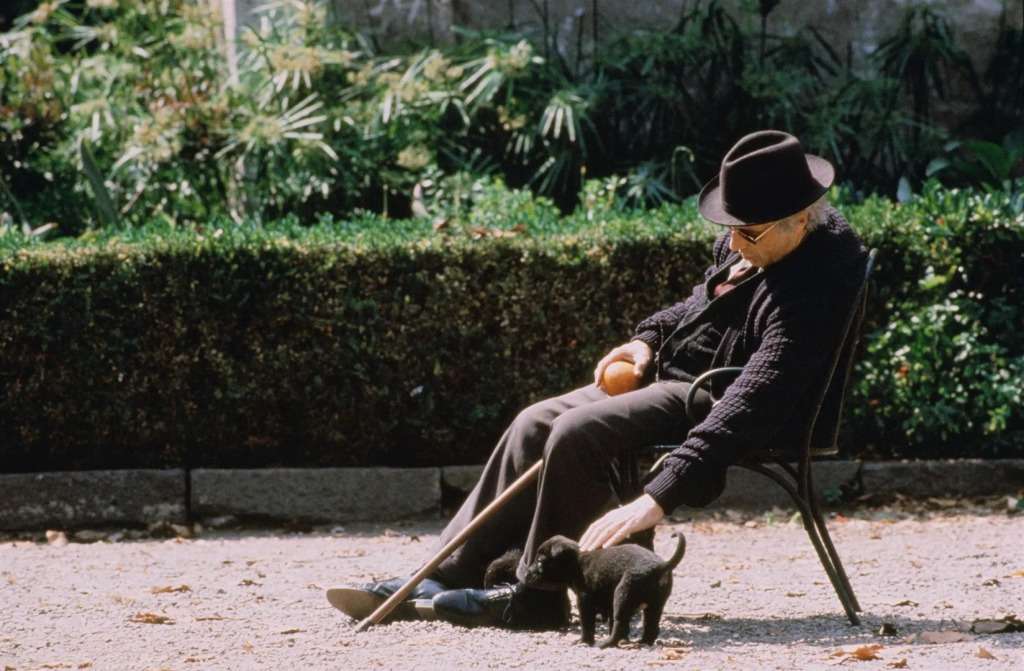
The examination of Michael Corleone’s character sheds light on the complexities of human nature and the social implications of wild aspirations and ethical concessions. This narrative functions as an admonitory tale, emphasizing the adverse outcomes that result from giving in to the temptation of authority.
Future research on Michael Corleone and The Godfather Trilogy may explore various topics. There is a chance to look at the cinematic strategies used to show Michael’s character development, examine the trilogy’s impact on the crime genre, and consider the cultural significance of Michael Corleone as a symbol of significance. In-depth analysis can also examine how Michael’s figure is perceived and understood in various social circumstances, revealing important insights into how attitudes about authority, kinship, and ethics change. Additionally, comparing Michael Corleone to other well-known characters might shed light on the broader influence of his persona on narrative and the analysis of complex ethical conundrums in popular culture.
Read More:
Is ‘Taxi Driver’ A Feminist Tale?
On Female Violence in Thelma and Louise
Nightmare Alley (2021) – A Character Analysis of Stanton Carlisle
Works Cited:
Andrew, Dudley. “The GODFATHER.” Film Comment, vol. 44, no. 6, 2008, pp. 38–42. JSTOR, http://www.jstor.org/stable/43457116.
Levy, E. (2013). Francis Ford Coppola. The Godfather Notebook. Regan Arts.
Marinaccio, Rocco. “The Godfather Effect: Changing Hollywood, America, and Me.” Italian American Review, vol. 3, no. 1, University of Illinois Press, Jan. 2013, pp. 74–77. Crossref, https://doi.org/10.5406/italamerrevi.3.1.0074.
Scorsese, M. (2010). Martin Scorsese on Francis Ford Coppola’s The Godfather. Retrieved from https://www.youtube.com/watch?v=a82F56KBR_g.
Sinicropi, Giovanni. “The Saga of the Corleones: Puzo, Coppola and ‘The Godfather’: — An Interpretive Essay —.” Italian Americana, vol. 2, no. 1, 1975, pp. 79–90. JSTOR, http://www.jstor.org/stable/29775866.
Smith, Dwight C. “Sons of the Godfather: ‘Mafia’ in Contemporary Fiction.” Italian Americana, vol. 2, no. 2, 1976, pp. 190–207. JSTOR, http://www.jstor.org/stable/29775887.
The Godfather Part 1. Directed by Francis F. Coppola, performances by Marlon Brando, Al Pacino, Diane Keaton, and James Caan. Paramount Pictures, 1972.
The Godfather Part 2. Directed by Francis F. Coppola, performances by Al Pacino, Diane Keaton, John Cazale, and James Caan. The Coppola Company, 1974.
The Godfather Part 3. Directed by Francis F. Coppola, performances by Al Pacino, Diane Keaton, Sofia Coppola, and Andy Garcia. American Zoetrope, The Directors Company, 1991.


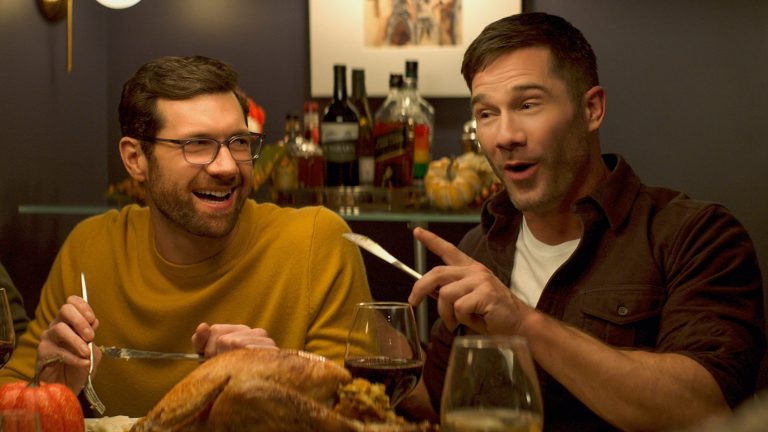
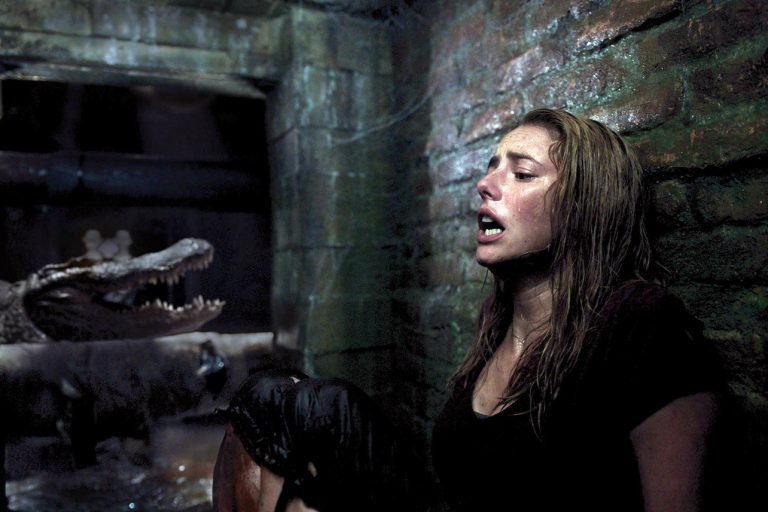
![Changeling [2008]: Conventional but Captivating](https://79468c92.delivery.rocketcdn.me/wp-content/uploads/2018/05/Changeling_HOF-768x432.jpg)
